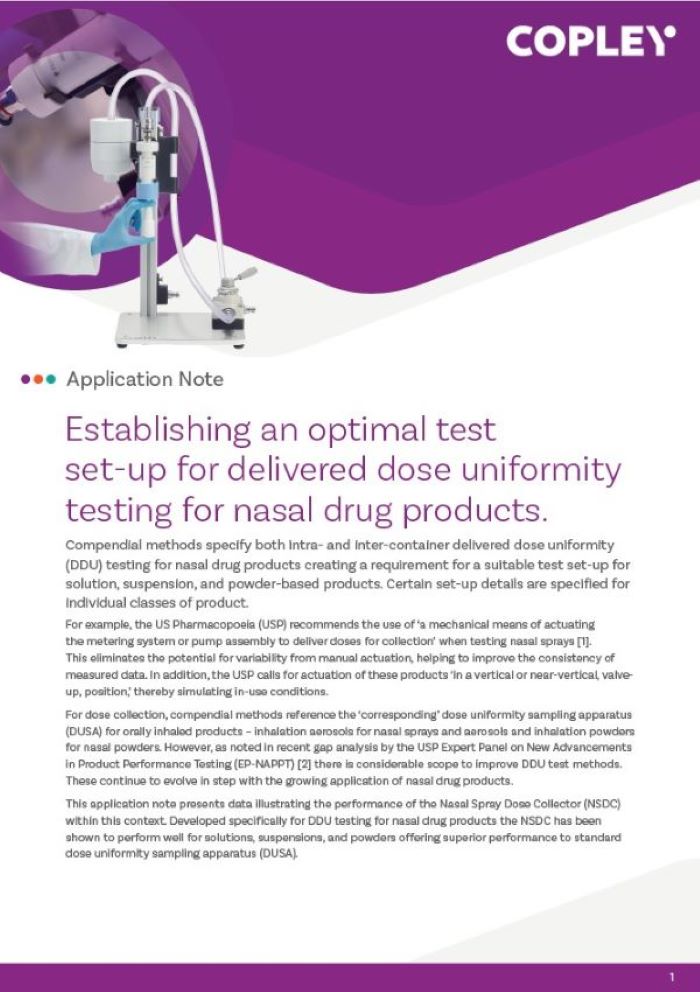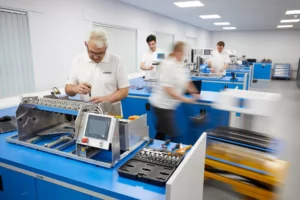Ensuring mass-balance in inhaler device testing is an important requirement, where the total mass collected in Delivered Dosage Uniformity (DDU) tests must be equivalent to the total mass collected in Aerodynamic Particle Size Distribution (APSD) tests, within defined limits. Although the entirety of the dose is collected in both tests, and both tests take place under notionally the same conditions, mass-balance is not always achieved.
One factor may be that inhaler devices can experience a different flow rate rise-time during DDU testing compared to APSD testing. This discrepancy in rise-time is caused by variations in volume and resistance between the DDU apparatus (DUSA) and the APSD apparatus (cascade impactor). If flow rate rise-time can be matched between both tests, then rise-time can be eliminated as a potential source of variability in mass-balance reconciliation.
Objective: To investigate whether the Volume and Resistance Compensator (VRC) can be used to match flow rate rise-time profiles between Dose Uniformity Sampling Apparatus (DPI DUSA) and cascade impactors (NGI, ACI) to ensure comparable test conditions are achieved.
This poster was presented at Drug Delivery to the Lungs 2023.














